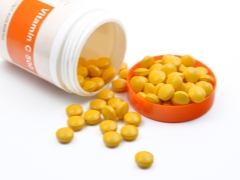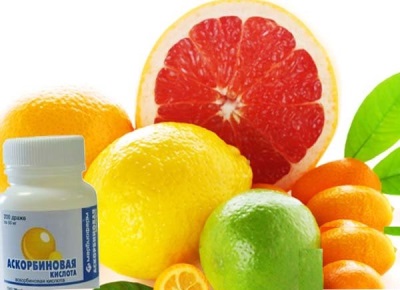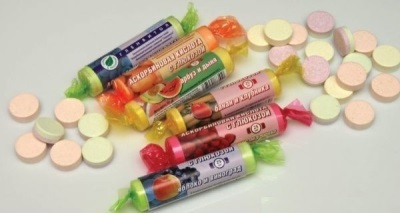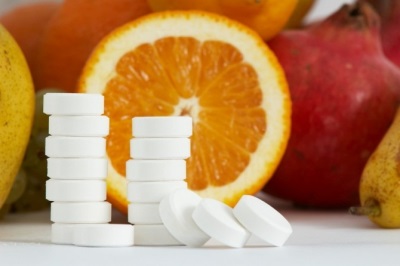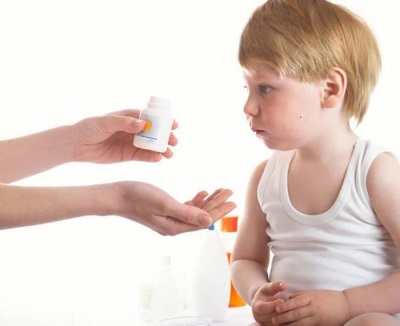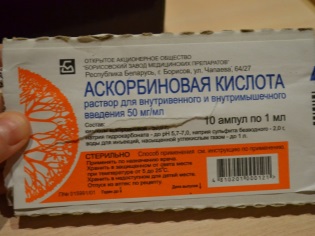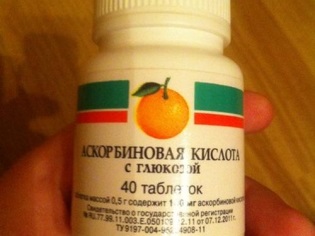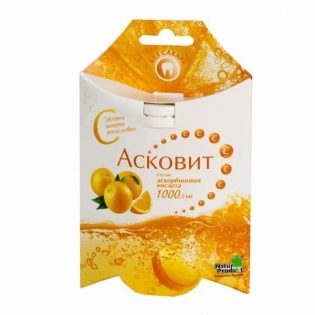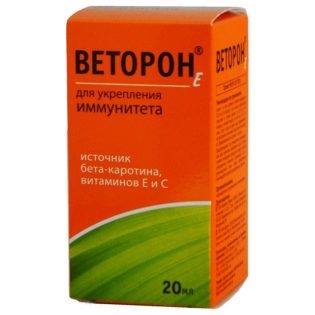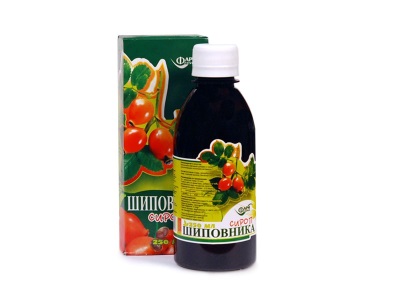Ascorbic acid for children
All moms know about the usefulness of vitamin C, so attention is paid to its entry into the children's organism from birth, making a rational menu for the baby. If you provide a child with a sufficient amount of ascorbic acid with food does not work, resort to vitamin supplements. For how many years is it permissible to give pharmaceutical preparations with vitamin C to prevent its shortage, and for which diseases they are needed in childhood?
Release form
Ascorbic acid release:
- In tablets. Such round tablets can be white, pink, orange or other colors depending on the composition. They include 25 mg or 100 mg of ascorbic acid, but they also produce a drug with 50 mg, 75 mg, 300 mg, or 500 mg of such a vitamin compound. One pack contains 10, 50 or 100 tablets.
- In the dragee. Often these are small yellow spherical vitamins. Each dragee contains 50 mg of vitamin. One pack contains 50, 100, 150 or 200 tablets.
- In ampoules. This form of ascorbic acid is intended for injection into the vein or intramuscular injections. This is a 5% or 10% clear solution, poured into 1 or 2 ml ampoules. One pack contains 5 or 10 ampoules.
- In powder. From it is preparing a solution that needs to be taken orally. The powder is a colorless or white crystals that have no smell. It is packaged in bags of 1 or 2.5 g. One pack contains from 5 to 100 such bags.
Composition
Powder form contains only ascorbic acid. In tablets and dragees, in addition to the basic substance, sucrose, wax, calcium stearate, dye, dextrose, starch, lactose, talc, crospovidone and other auxiliary ingredients may be present. In addition to vitamin C, water, sulphite and sodium bicarbonate, cysteine, edetate disodium may be present in injectable form.
Operating principle
Once in the body, ascorbic acid has the following effect:
- Normalizes the permeability of small vessels.
- Protects cells and tissues from toxic substances (antioxidant effect).
- Strengthens defenses, preventing viral infections and catarrhal diseases by activating the formation of antibodies and interferon.
- Helps absorb glucose.
- A positive effect on the functions of the liver.
- Regulates blood coagulation.
- Accelerates skin healing with injuries.
- Participates in the formation of collagen.
- Helps absorb iron and folic acid.
- It activates the digestive enzymes, improves the secretion of bile, the work of the pancreas and thyroid gland.
- Reduces the manifestations of allergies and inflammation due to inhibition of the formation of mediators involved in these pathological processes.
How vitamin C affects the body and what are the indications and contraindications to the use of ascorbic acid - see the short video:
Indications
The child is recommended to take ascorbic acid with the preventive purpose:
- If his diet is unbalanced and there is a risk of hypovitaminosis.
- During the active growth of the child's body.
- To prevent ARVI.This reason is relevant in the autumn, in the winter cold and in early spring.
- If a child has increased emotional or physical stress.
- If the baby is recovering from injury or surgical treatment.
For therapeutic purposes, vitamin C preparations are prescribed:
- When diagnosed with hypovitaminosis C.
- With hemorrhagic diathesis.
- With nasal and other bleeding.
- In case of infectious diseases or intoxications.
- With excessive use of iron for a long time.
- In acute radiation sickness.
- With anemia.
- When liver pathologies.
- With colitis, peptic ulcer, enteritis or ahilia.
- With cholecystitis.
- With flaccid healing of burns, ulcers, or wounds on the skin.
- For bone fractures.
- With dystrophy.
- When helminthiasis.
- With chronic dermatosis and some other skin diseases.
From what age can I give?
It is impossible to give drugs with ascorbic acid to a one-year-old child. Tablets, which contain 25 mg of ascorbic acid, administered from 3 years of age. Drops with a vitamin content of 50 mg are prescribed for children over 5 years old.
Such age restrictions are associated with difficulties in ingesting the drug at an early age, as well as the risk of injecting dragees. If necessary, the doctor may prescribe vitamin C before, but you should not do it yourself. Even when a child is already 3 years old or more, it is worth consulting with a pediatrician about the use of such a vitamin.
Contraindications
Instructions for use prohibits ascorbic acid in such cases:
- If a patient has an intolerance of such a vitamin.
- If there is a tendency to thrombosis or thrombophlebitis is detected.
- If the child has diabetes (for forms with sugar).
- If the blood test showed hemoglobin levels too high.
- If a small patient is diagnosed with severe renal pathology.
Side effects
Sometimes the child’s body reacts to allergy ascorbic acid. These are often skin changes that are manifested by redness, itching, rashes.
Treatment with vitamin C can also lead to:
- Thrombocytosis, erythropenia, leukocytosis due to neutrophils.
- Weakness and dizziness (if injected into a vein too quickly).
- Diarrhea (with high dosage).
- Nausea or vomiting.
- Damage to the enamel of the teeth (with prolonged resorption in the mouth).
- Fluid retention and sodium.
- Formation of oxalate stones in the urinary tract (with prolonged use of high doses).
- Violation of metabolic processes.
- Kidney damage.
- Soreness at the injection site (if administered intramuscularly).

Instructions for use and dosage
- Tablets of ascorbic acid with glucose or pills offered to the child after meal.
- Prophylactic dose for babies 3-10 years old, presents 1 tablet containing 25 mg of vitamin, and at the age of ten years, this daily dosage is increased to two tablets (50 mg per day).
- Treatment dose is 2 tablets of 25 mg of ascorbic acid per day at the age of 10 years (daily dose of 50 mg) and three or four tablets of the drug at the age of 10 years (daily dosage of 75-100 mg).
- Prophylactic ascorbic acid is recommended to take from two weeks to two months. The duration of the treatment course is determined by the doctor.
- If the dosage of the active substance in the tablet is 100 mg, then such ascorbic acid is given in a dose of 1/2 tablet per day for children over 6 years old.
- Drops give for prevention to children older than five years, 1 piece per day, and for treatment - 1-2 tablets to 3 times a day.
- Prescribing Ascorbic Acid to Children on Injections should only be done by a doctor.. The daily dosage is 1-2 ml of the drug, but a more accurate dose, route of administration and duration of therapy should be determined by a specialist, taking into account the disease in a particular child.
Overdose
Since ascorbic acid is a water-soluble compound, hypervitaminosis does not develop when the dosage of this vitamin is too high. However, excessively high doses of such a substance can damage the lining of the stomach and intestines, which leads to abdominal pain, diarrhea, bloating, vomiting, and other negative symptoms.
Also, poisoning with a very large amount of vitamin C is manifested by weakness, sweating, hot flushes, insomnia, headaches. In addition, an excess of this substance will reduce the permeability of capillaries, which will worsen the nutrition of tissues, increase blood pressure and may lead to hypercoagulation.
In order to not cause ascorbic acid, you should be aware of the maximum recommended dosages of this vitamin:
- For children under 3 years old, this is 400 mg per day.
- For a child from 4 to 8 years old, the maximum dose per day is 600 mg.
- For children from 9 to 13 years should not exceed a dose of 1200 mg per day.
- At the age of 14 years old, the maximum maximum of ascorbic acid per day is 1800 mg of this vitamin.
Watch the informative video, which tells you what can be, if you allow an excess of vitamin C in the body:
Interaction with other drugs
- The use of ascorbic acid will increase the blood levels of penicillin and tetracycline antibiotics, as well as salicylates.
- With the joint intake of vitamin C and acetylsalicylic acid the assimilation of ascorbinka worsens. The same effect is observed if you wash down ascorbic acid with alkaline liquid or fresh juice.
- Simultaneous use with anticoagulants will reduce their therapeutic effect.
- The intake of vitamin C with iron supplements contributes to a better absorption of Fe in the intestine. If, however, assign ascorbic acid and deferoxamine, the toxicity of iron will increase, which will adversely affect the heart and its work.
- Mixing the injectable form of vitamin C in the same syringe with any medication is not recommended, since many drugs react with ascorbic acid.
- With simultaneous treatment with barbiturates, excretion of ascorbic acid with urine increases.
Terms of sale
You do not need a prescription to buy Ascorbic Acid in pharmacies. The price of 10 ampoules of 2 ml with a 5% solution of ascorbic acid is about 40 rubles. A jar of 50 mg of vitamin C tablets costs 20-25 rubles, and a 25 mg tablet containing glucose costs about 10-20 rubles.

Storage conditions and shelf life
The place where you need to place Ascorbic acid for better preservation should not be very humid, hot or lit. In addition, it is necessary to keep the drug where small children will not get to it.
The shelf life of tablets with ascorbic acid is 1-3 years from different manufacturers, 5% solution for injections is stored up to a year, 10% solution and pills - 18 months from the date of issue.
Reviews
Parents generally speak well of ascorbic acid preparations. Sweet ascorbic is popular with children and is considered by most adults a useful supplement, especially during the cold season. Moms are attracted by the ability of such drugs to prevent SARS, strengthen the immune system and blood vessels. In their reviews, they also praise Ascorbic acid for its pleasant taste, low cost and availability in pharmacies.
The disadvantages of this drug in most reviews are not called. Only in some children Ascorbic acid causes allergies, but more young patients tolerate the drug well.
Analogs
Ascorbic acid for children in pills, pills or injection form can be replaced by other drugs that can compensate for the lack of vitamin C or prevent hypovitaminosis. These include:
- Asvitol. The drug is represented by vitamin C tablets (25-50 mg each) and chewable tablets (200 mg).
- Askovit. Such vitamin C is produced in powder (packaged in 1 g sachets), from which they prepare a drink with the taste of green tea and hibiscus or orange flavor. Also, this drug is produced in effervescent tablets of 500 or 1000 mg of ascorbic acid with orange and lemon flavor.
- Askorutin. In this preparation, vitamin C is combined with rutin. Both substances are presented in one tablet in a dose of 50 mg. The drug is prescribed from the age of 3.
- Vetoron. The composition of this medicine in drops includes vitamins C and E, as well as beta-carotene. The drug is given from 3 years of age.
- Wild rose syrup. In such a preparation, ascorbic acid is combined with rosehip extract. The drug is prescribed from 2 years to prevent vitamin C deficiency and during the recovery period after a cold or infection.
Can I replace vitamin C from food?
If the reason for giving the child a tablet of ascorbic acid is to prevent colds or a deficiency of such vitamin in food, then it is possible to avoid the use of ascorbic acid preparations, if you pay increased attention to the presence of such a compound in food. A child can receive vitamin C from:
- Rosehips.
- Citrus fruits.
- Black and red currants, strawberries, cherries, gooseberries and other berries.
- Spinach and other greens.
- Sweet pepper, cabbage, green peas, potatoes and other vegetables.
To be sure that the baby has enough vitamin C from products, mothers should know the rate of such a useful compound for different ages. Then, having learned about the content of ascorbic acid in different foods or on the labels in baby puree, you can roughly calculate whether the child gets enough vitamin C. A baby should consume per day:
- 30 mg of vitamin C at the age of one year.
- 40 mg of ascorbic acid in 1-2 years.
- 45 mg of this vitamin from the age of 3 to 12 years.
- 60 mg of ascorbic acid in adolescence.
What Dr. Komarovsky thinks about taking vitamin complexes, see the following video.
